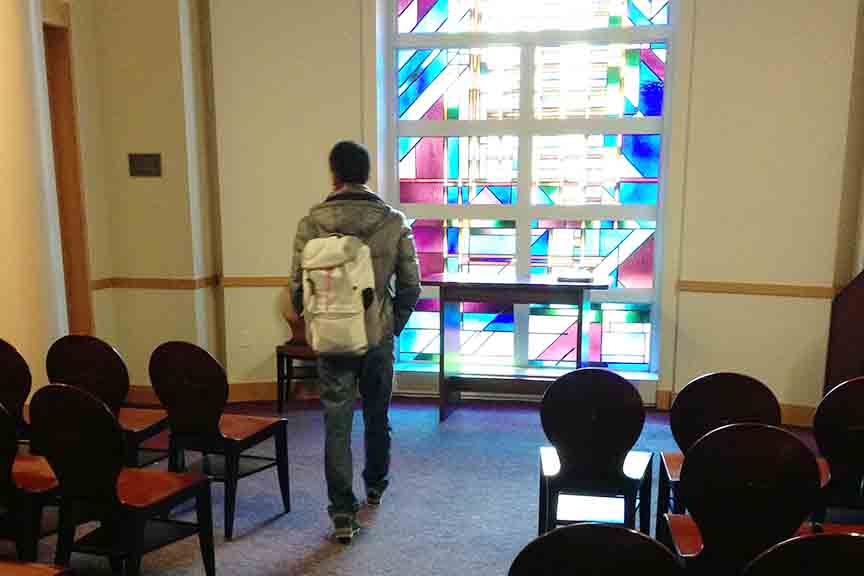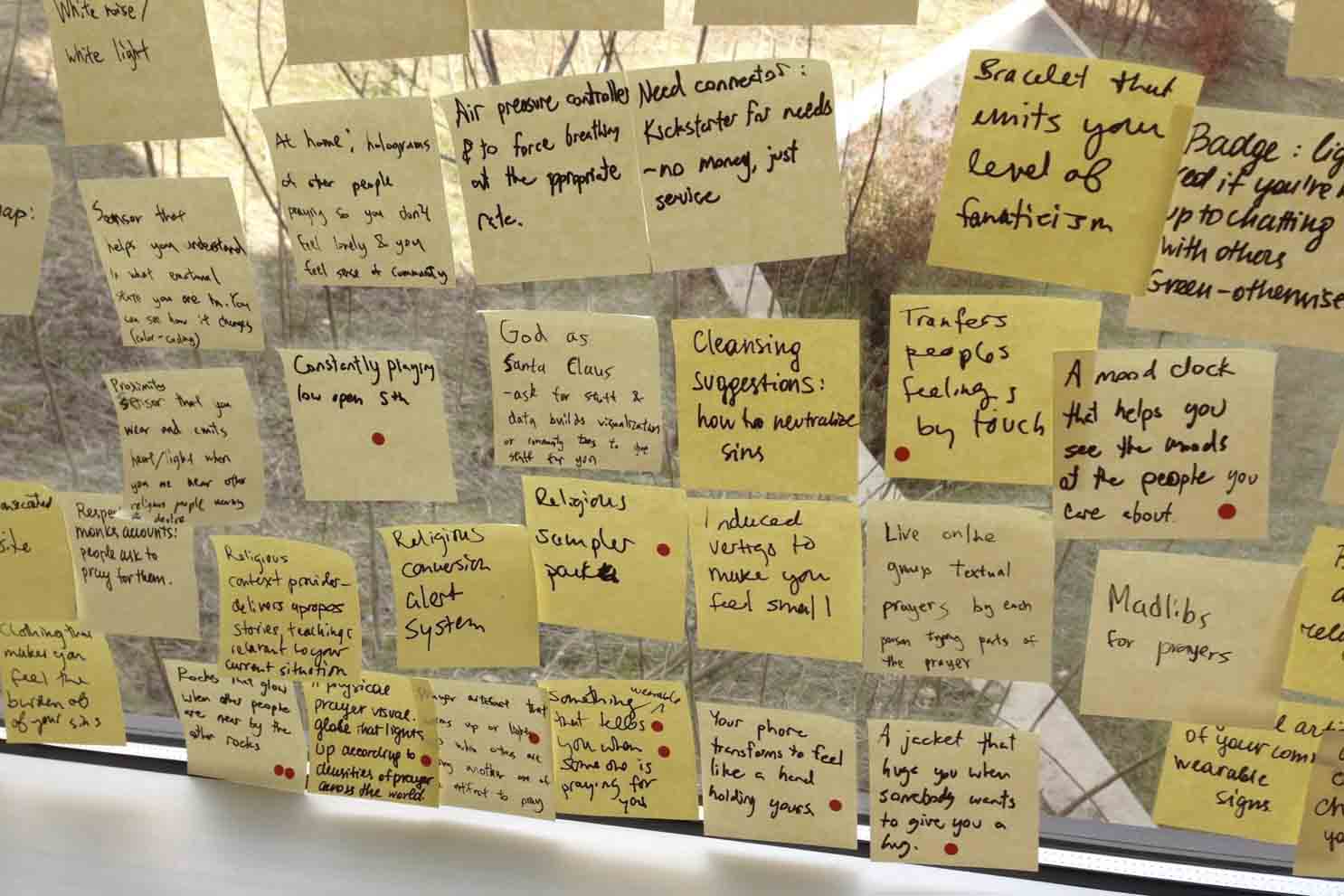
"I like getting out of the city, going hiking - or I'll go to a blues dance." -Peter, 25, aetheist
"The cathedral puts everything in perspective. Your problems begin to seem so small." -Susan, 62, Catholic

We spent time in spaces like this non-denominational chapel.

We brainstormed more than ideas inspired by our research insights and then voted which to illustrate as storyboards.
"It would really boost my day if I got a message that someone was praying for me." -Jenn, 19, Catholic
People were drawn to artifacts that felt personal, familiar, and unobtrusive, like jewelry, and the notion of getting feedback for the positive thoughts or prayers they tried to send."I like to think they can hear my prayers." -Anna, 84, Catholic